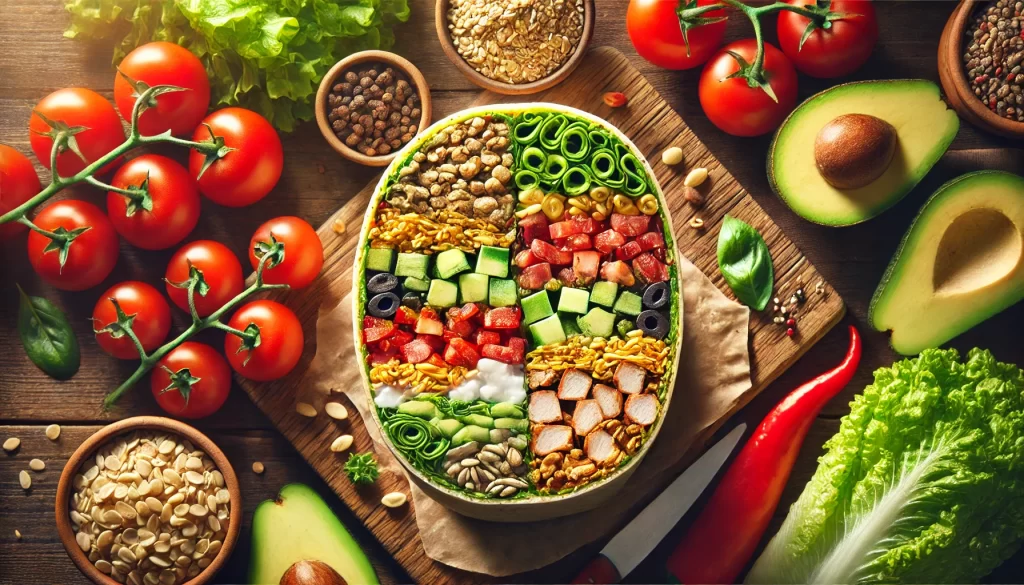Burritos are one of the most popular and versatile foods people enjoy worldwide. But have you ever stopped to think about what food groups are in a burrito? This flavorful dish isn’t just a tasty treat; it’s also a balanced meal that can include a variety of essential food groups. In this article, we’ll break down the components of a burrito, exploring how each food group contributes to making this meal both delicious and nutritious.
What Food Groups Are in a Burrito?
When you bite into a burrito, you’re indulging in more than just a flavorful experience; you’re enjoying a meal that can include several key food groups. Understanding what food groups are in a burrito enhances your appreciation for this beloved dish and helps you make healthier choices. Whether you’re a burrito fan or just curious about your food, this article will uncover the delicious truth behind the layers of a burrito.
The Essential Food Groups in a Burrito

To answer the question, “What food groups are in a burrito?” we need to look at the essential components of this popular dish. Typically, a burrito includes the following food groups:
- Grains
- Proteins
- Vegetables
- Dairy
- Fruits (Optional)
- Fats
Each food group plays a vital role in making the burrito both satisfying and nutritious. Let’s examine each group to see how it contributes to the overall goodness of a burrito.
Grains: The Foundation of the Burrito
The tortilla is at the heart of every burrito, which belongs to the grains food group. The tortilla is usually made from wheat or corn and serves as the wrap that holds all the ingredients together. Grains are essential to a balanced diet, providing the body with energy through carbohydrates. Opting for whole-grain tortillas can boost your fiber intake, making your burrito healthier.
Whole Wheat vs. White Tortillas
Whole wheat tortillas contain more nutrients and fiber compared to white tortillas. If you want to add more whole grains to your diet, choosing a whole wheat tortilla is a simple switch that can make your burrito more nutritious.
Proteins: The Powerhouse of the Burrito
Next up is the protein, which is often the star of the burrito. Familiar burrito protein sources include chicken, beef, pork, beans, or tofu. Protein is vital for muscle repair and growth, making it an essential food group.
Choosing Lean Proteins
When selecting protein for your burrito, lean options like grilled chicken or beans are healthier. They provide the necessary nutrients without the extra fat that can come from fried or fatty meats.
Vegetables: The Nutrient Boost in Every Bite

Vegetables are another essential food group found in burritos. They add color, crunch, and a burst of vitamins and minerals. Common vegetables in burritos include lettuce, tomatoes, onions, bell peppers, and avocados. These ingredients are rich in fiber, vitamins, and antioxidants, all essential for good health.
The Power of Fresh Ingredients
Using fresh, colorful vegetables enhances the flavor of your burrito and increases its nutritional value. Aim to include a variety of vegetables to get a wider range of nutrients.
Dairy: The Creamy Addition
Dairy products, such as cheese, sour cream, or yogurt, are often included in burritos. These ingredients add creaminess and flavor while also contributing to your daily calcium and vitamin D intake.
Healthy Dairy Choices
Opt for lower-fat dairy options like reduced-fat cheese or Greek yogurt. These choices allow you to enjoy the creamy texture without adding too much extra fat to your burrito.
Fruits: The Unexpected Twist
While rare, some burritos include fruits such as mango salsa or pineapple. Fruits add a sweet and tangy flavor that contrasts beautifully with the burrito’s savory elements. Including fruits can also boost the fiber and vitamin content of your meal.
When to Add Fruits to Your Burrito
Fruits that have a tropical or fusion twist work best in burritos. They pair well with proteins like chicken or fish, adding a refreshing taste that complements the other ingredients.
Also Read: Liberian Food: Discover the Bold Flavors That Will Amaze You
Fats: The Flavor Enhancer
The fats in burritos come from avocado, cheese, and cooking oils. While fats are often seen as unhealthy, they are essential for absorbing vitamins and adding flavor. The key is to include healthy fats in moderation.
Choosing Healthy Fats
Avocados are an excellent source of healthy fats and can be a creamy alternative to sour cream. Using olive oil in cooking is another way to include healthier fats in your burrito.
So, what food groups are in a burrito? As we’ve explored, a well-made burrito can include grains, proteins, vegetables, dairy, fruits, and fats, making it a balanced and delicious meal. By understanding the food groups in a burrito, you can enjoy this popular dish while making choices that align with your nutritional needs. Whether making burritos at home or ordering one at a restaurant, keep these food groups in mind to create or choose a burrito that’s not just tasty but also nutritious. Enjoy the delicious truth behind every bite of your burrito!

